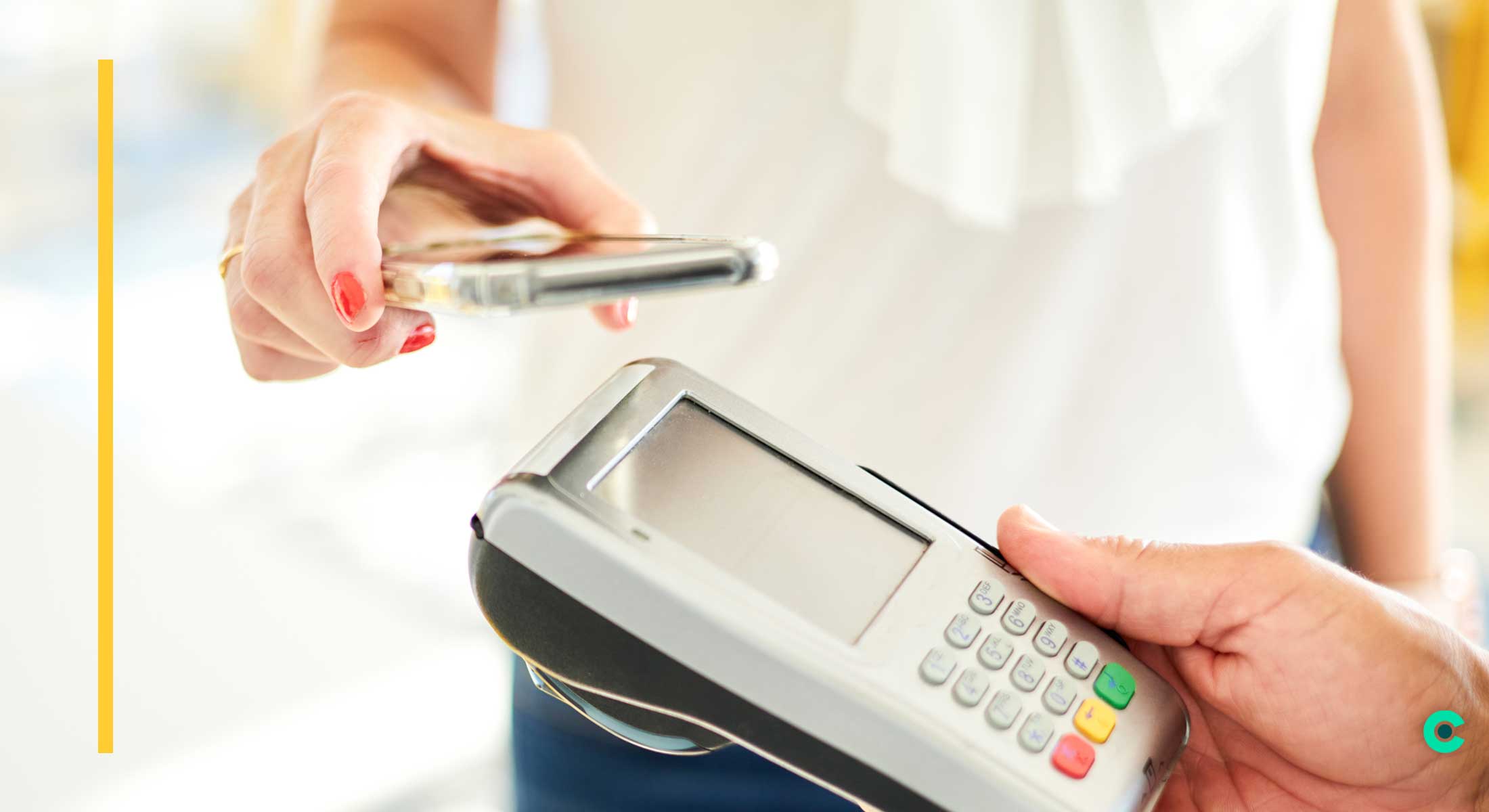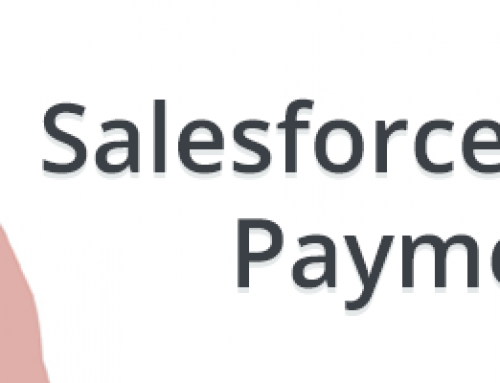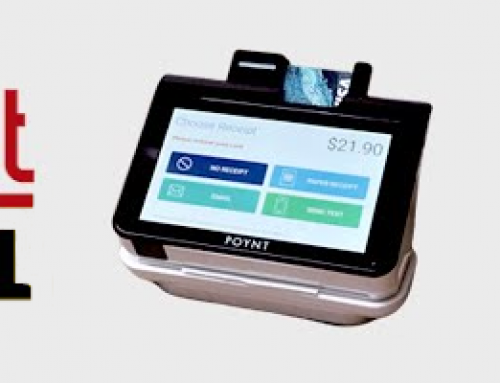If you haven’t used contactless payments yourself, you’ve probably seen a contactless payment taking place at some point. Does this scene sound familiar?
A customer walks up to the register at their local grocery store and the cashier rings up their items. The customer whips their phone across the top of the terminal and suddenly, the transaction is complete. No one swiped a card, punched in a PIN number, or entered a zip code for verification.
What you saw wasn’t magic – it was the new way we make payments in physical retail environments.
In a post-pandemic world, contactless payments are more popular than ever. Shoppers embraced touchless payments for the hygiene factor, quickly realized that they are faster and more convenient, and never looked back.
What Are Contactless Payments?
Contactless payments take place when a customer places their smartphone or credit card across the top of a credit card terminal in a store, and the system instantly records the payment. Unlike legacy cards, contactless cards allow you to pay over a secure radio interface.
In technical terms, tap-to-go payments use a technology called Near-Field-Communication or NFC. This chip technology enables card readers to read information from a customer’s credit/debit card or enabled device. NFC isn’t necessarily a new technology – it’s a form of RFID. Businesses have used radio-frequency identification for years to streamline many tasks like scanning inventory and providing keyless access to office buildings.
Contactless credit and debit cards use chip technology, emitting radio waves that can be picked up by NFC-enabled readers within a distance of 4 centimeters, or about 1.5 inches. Once the terminal picks up the signal, it processes the payment immediately.
Why Should You Offer Contactless Payments?
Tap-to-pay credit cards are becoming increasingly popular among consumers. Digital wallet services like Google Pay, Apple Pay, and Samsung Pay have made contactless payment possible through mobile phones, and credit card providers are ramping up their promotion of tap-and-go cards.
If you’re wondering just how fast this sector is growing, consider this – global contactless payments are expected to reach $6 trillion by 2024, according to Juniper Research reports. Although only 3% of U.S. cards were contactless in 2018, consumers in North America will drive almost a quarter of future purchases, accounting for $1.5 trillion in contactless purchases each year by 2024.
In the United States, contactless payment technology was slow to gain traction relative to other global markets. But the onset of the COVID-19 pandemic drove a spike in adoption, as speed and touchless features became increasingly important to shoppers. According to Visa, 31 million Americans tapped a card or used a mobile device for payment in March 2020, nearly 50% more than had done so six months earlier.
Furthermore, MasterCard reported a 40% jump in contactless payments during the first quarter of 2020. A survey of American consumers in April 2020 showed a 16% drop in consumers that were likely to pay with cash.
While the U.S. is rapidly catching up, the rest of the world has already adapted to this new way of making payments. Outside of the U.S., NFC-enabled purchases make up 60% of all face-to-face retail payments.
Contactless payments have become the preferred way to pay around the world. In Australia, over 75% of face-to-face Visa transactions are tap-and-go; and in Hong Kong, contactless face-to-face Visa transactions tripled in just 18 months.
What are the Benefits of Contactless Payments?
Tap-to-pay systems provide an array of benefits, with minimal drawbacks. Integrating this type of system offers safety, security, and convenience to businesses and customers alike.
Healthier Interactions
The pandemic changed the way that we all think about interacting with the world. Retailers don’t typically sanitize card terminals between customers, and customers are mindful of picking up germs from the person in line ahead of them as they engage with the payment hardware. With contactless payments, customers never touch the terminal or PIN pad. Instead, they only make contact with their card or mobile phone, for an overall more hygienic experience.
Improved Security
Contactless payments provide a level of protection that traditional magnetic stripe cards can’t achieve. They require different information than other cards. Instead of transmitting the cardholder’s name, security code, and billing information from data contained in a magnetic stripe that can be copied, a one-time encrypted code transmits from the credit card or phone to the reader. NFC makes it extremely difficult for anyone to steal a customer’s card information – whether manually or electronically. Additionally, when you and your staff can’t touch, see, or hear a card number, it makes it much easier to achieve PCI compliance.
Convenience Without Tradeoffs
Security doesn’t always pair well with convenience. The introduction of EMV chip cards, for instance, vastly increased the security aspect of card payments, but drastically slowed down lines in grocery stores and other retail locations. Contactless payments combine security and speed, allowing transactions to complete in a matter of a few seconds. These payments enable customers to get through the line faster, and helps businesses to process more transactions in a shorter period.
Breaking Down Myths About Contactless Payments
Every payment method carries some risk. Cash can be lost, and hackers can duplicate mag-stripe cards. In comparison, contactless payments are one of the most secure forms of payment. Since tap-to-go is a relatively new concept in the payment industry, some consumers have questions about security.
Can NFC Signals Be Intercepted?
As a touchless system, contactless payments rely on radio waves sent from a card or device to a NFC-enabled terminal. One could argue that this leaves room for someone with a scanner to steal the customer’s information during a transaction. Technically, it is possible. But in reality, it’s much less of a concern.
NFC sends a short-range signal of around 1.5 inches. To steal data, a hacker would need to have a scanning device positioned within this range. Some critics claim that a customer could have their data taken from their wallets by a stranger with a scanner walking by them in the store. However, the Identity Theft Resource Center has stated that this threat doesn’t exist in real-life situations.
But what if a hacker could scan information from the card – how significant would the threat be? The risk is probably not as intense as you think.
Contactless cards incorporate tokenization to secure the customer’s data further. The token is randomized, producing a unique set of numbers and symbols that represent your card data. Each time you use the card, it creates a new token. If someone were able to scan a customer’s information while making a purchase, the token would become useless after the customer completes the transaction.
Is Payment Data Safe on a Mobile Phone?
With contactless payments, it’s possible to leave your credit card at home and use your phone to make mobile payments with NFC terminals. However, this presents a concern for some consumers – if your mobile phone is lost or stolen, does that mean someone else can access your payment information? Again, the answer is yes, but… in real situations, this threat is minimal.
To make a payment with your device, someone would need to unlock the phone, and successfully log into your payment app. You can also wipe most smartphones remotely if lost, deleting any sensitive information stored on the device.
In comparison, it is safer to lose your phone than to lose your credit card. Your phone has additional protections to keep unwanted parties from accessing its information, while bad actors can charge a credit card with just your zip code.
The World of Payments is Shifting – What’s Next?
The rise of contactless payments, already well underway pre-pandemic, shows no signs of decelerating. If you’re not there yet, never fear – implementing contactless payment is simple. All you need is a contactless-enabled payment terminal, like Chargent Terminal, which provides you with all the point-of-sale capabilities you’re used to, plus additional features like NFC technology, multiple receipt options, and Salesforce integration.
As for what’s ahead, the next payment method to watch is Real-Time Payments (RTP), payments made between bank accounts that are initiated, cleared, and settled nearly instantly, bringing speed and simplicity to business and consumer transactions. If you read that description and immediately thought of Venmo, you’re not wrong, but RTP is much broader in scope. We’re looking ahead to see how this technology is adopted by businesses, from SMBs to the enterprise.
But no matter how much payment technology evolves, one thing remains universally true: if you’re taking payments, you must provide a seamless and convenient experience from start to finish. One key is offering your customers the ability to pay using their preferred payment methods.
Chargent makes it simple to take payments anywhere in Salesforce, anywhere your customers are. Want to learn more about what’s next in payments, or find out how you can get paid faster by making it easier for your customers to pay? Get started today.








